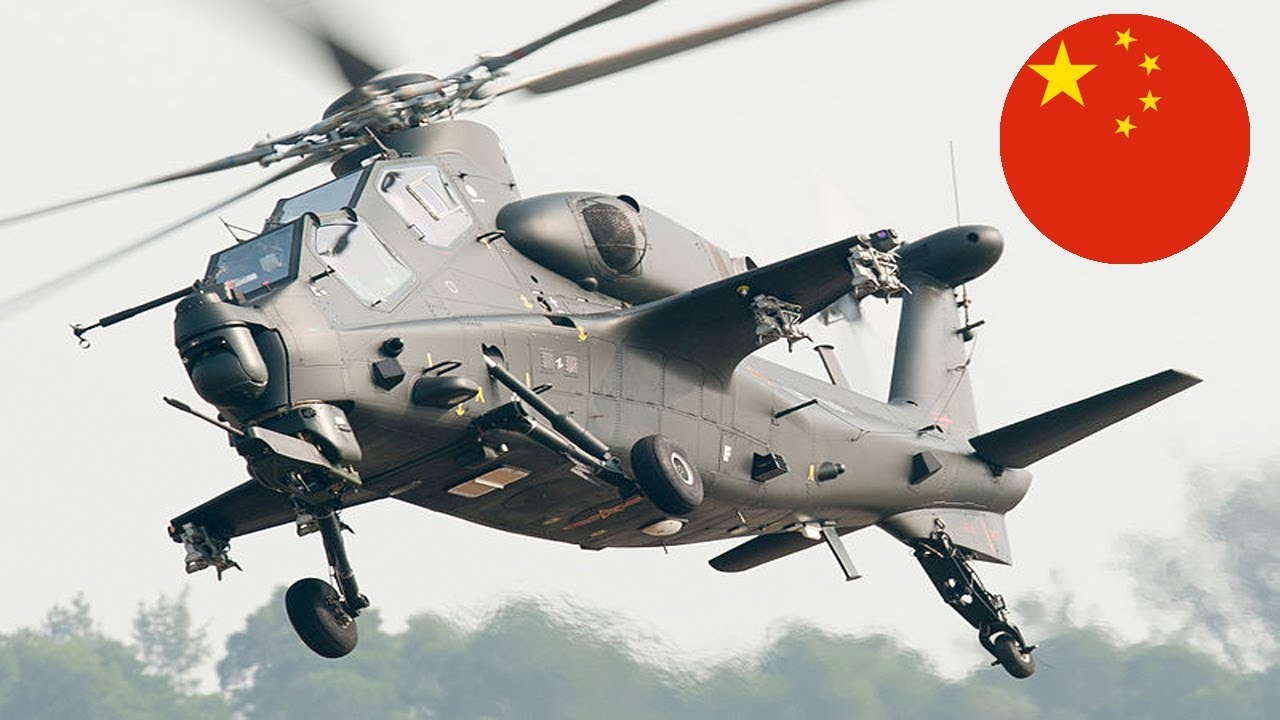For the first time, the Chinese military attack helicopters joined the transport helicopters in routing border patrols in the high-altitude Karakoram Mountains, according to a Chinese media report on July 14.
Turkey’s ‘National Combat Aircraft’ Debuts At UK Airshow Along With Attack Chopper, Combat UAVs
An army aviation brigade attached to the People’s Liberation Army (PLA) Xinjiang Military Command recently teamed up with special forces and medical units in a live fire exercise in the Karakoram Mountains at an altitude of 5,200 meters, reported the Chinese state-owned media.
A remarkable feature of this live fire exercise was the participation of Z-10 attack helicopters, reportedly for the first time. In the past, only transport helicopters would carry border defense troops for patrol missions.
According to Chinese military experts, adding attack helicopters to patrol missions will provide air support to the PLA ground troops deployed on China’s borders and better safeguard the country’s national sovereignty and territorial integrity.
China and India are engaged in a longstanding border standoff that entered its third year in May 2022 and continues despite numerous high-level dialogues between top officials.
Experts believe that the deployment of Z-10 attack helicopters in the high-altitude Karakoram Mountains just a few days before the crucial border talks could be a well-timed show of force from China.
“This move (Deployment of Z-10s in border region) signals an aggressive and an assertive posture before the Corps Commanders meeting between India & China on July 17, 2022,” Lt. Col. JS Sodhi (Retd) of the Indian Army told EurAsian Times.
Z-10 Attack Helicopter
Developed by the Changhe Aircraft Industries Group (CHAIG) and China Helicopter Research and Development Institute (CHRDI), the Z-10 attack helicopter can conduct anti-armor and combat interdiction operations and has limited air-to-air combat capability.
The helicopter can carry HJ-9/9A and HJ-10 ATGMs anti-tank guided missiles (ATGMs) and a range of air-to-air missiles (AAMs), including TY-90, PL-5, PL-7, and PL-9 AAMs.
In addition, the Z-10s are also armed with the 14.5mm heavy machine gun. A 20mm or 30mm autocannon can be fitted on their chin-mounted turret.
Furthermore, the Z-10 has four multi-barrel unguided rocket pods under the sub wings that can fire various rockets ranging from 20 mm to 130 mm.
However, the Z-10s have been known as operationally unsuitable for high-altitude operations because of their domestically built WZ-9 engine, which experts regard as too weak for the 5.5-ton helicopter.

This is why Chinese experts hail their latest participation in the border patrols in Karakoram Mountains as proof that the engine is powerful enough for high-altitude missions.
“The Z-10 attack helicopter’s routine deployment in high-altitude border patrols indicates that its engine is powerful enough to deal with the thin air, a Beijing-based military aviation expert told Global Times.
The Z-10s deployed in the latest border patrols could have also been fitted with a new, more powerful engine called the WZ-16, which was reportedly being developed with the help of French helicopter engine manufacturer Turbomeca – that later became the ‘Safran Helicopter Engines’ – for realizing the high-altitude capability in Z-10s.
The two WZ-9 engines, producing 1350 shaft horsepower each, provide the helicopter with a stated service ceiling of 6,000 meters.
Z-16 Rivaled By Apaches
On the Indian side, China’s Z-10 helicopters are rivaled by the fleet of 28 American-made Apache helicopters, of which 22 belong to the Indian Air Force (IAF), and six belong to the Air Wing of the Indian Army.

These Apache helicopters are armed with Stinger air-to-air and Hellfire air-to-surface missiles to destroy the enemy’s armor. Also, of the IAF’s 22 Apaches, 11 are equipped with the Longbow fire control radar system.
In addition, the Apaches also have a 30 mm M230 chain gun mounted between the main landing gear, below the forward fuselage that can fire 625 armor-penetrating bullets per minute on enemy ground troops and lightly armored structures.
Powered by two General Electric T700 GE 701C turboshaft engines that produce 1,890 horsepower each, the Apache has a service ceiling of 6,400 meters. Moreover, India has recently placed an order for 15 Light Combat Helicopters (LCH) from Hindustan Aeronautics Limited (HAL).
Powered by the two Shakti Engines, the 5.5-ton LCH has an operational ceiling of 6,500 meters. It can carry a 20 mm gun and 70 mm rockets, French MBDA Mistral air-to-air missiles, and the Helina air-to-ground missiles, which are the airborne version of the NAG anti-tank missiles.
Apart from Apaches, the Indian Army currently possesses around 75 Advanced Light Helicopters (ALH) Rudra, an armed version of the Dhruv utility helicopter, also produced by HAL.
Whereas China has 100s of Z-10s, plus there are Z-19s as well that are reconnaissance helicopters with limited attack capability.

“China has vast superiority as compared to India as regards the attack helicopters are concerned,” said Lt. Col. JS Sodhi, noting, “China has an aviation brigade with each of its Corps.”
Attack Helicopters are an essential feature of the mechanized battlefield. According to Sodhi, they are primarily used in armored warfare to provide cover to the advancing armored columns, “as the armored columns are highly susceptible to aerial attacks since the top of any tank has the least armor protection compared to its sides.”
- Contact the author at tanmaykadam700@gmail.com
- Follow EurAsian Times on Google News




